Monitoring Chlorine in a Distribution System
- Home
- Monitoring Chlorine in a Distribution System
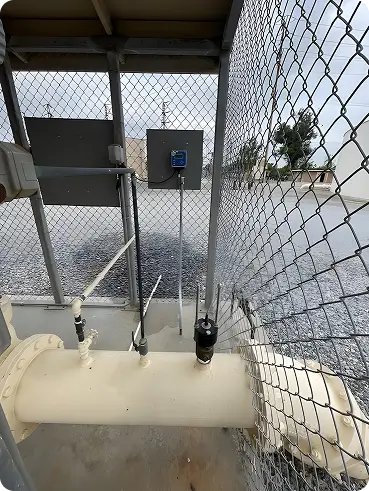
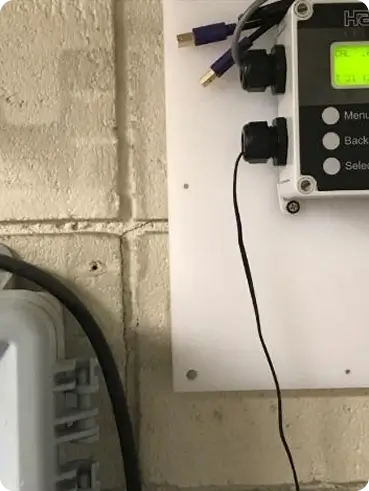
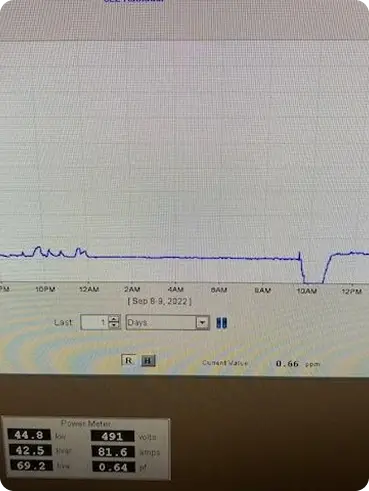
- 10 December 2024
Technical White Paper: Monitoring Chlorine in a Distribution System
Abstract
Abstract This document describes the implementation and benefits of the Halogen Systems MP5 chlorine sensor in the City of Lakewood’s water distribution network. The paper outlines the challenges faced with traditional chlorine monitoring methods, the transition to a waste stream-free chlorine sensor, and the outcomes of this technological shift in terms of water conservation and operational efficiency.
Introduction
The City of Lakewood, utilizing groundwater from the Central Basin Groundwater Basin, operates an extensive water infrastructure including 11 deep wells, 180 miles of water mains, three storage facilities, and two treatment facilities. This infrastructure supports an annual water delivery of approximately 6,500 acre-feet. The need for an innovative chlorine monitoring solution arose due to the inefficiencies and waste associated with traditional chlorine sensors.
Technical White Paper: Monitoring Chlorine in a Distribution System
Waste Stream
Traditional amperometric and DPD chlorine sensors generate significant wastewater, up to 69,000 gallons annually.
Non-Real-Time Monitoring
Daily grab samples did not allow for immediate detection of chlorine dosing issues such as air locking, pump failure, or leaks.
The Search for Innovative Solutions
In response to these challenges and driven by the necessity for water conservation amid California’s drought, Derwin Dy, then Assistant Director of Water Resources, initiated a search for an NSF-61 approved chlorine analyzer without a waste stream. The collaboration with Halogen Systems led to the development of the MP5 sensor.
Implementation of Halogen MP5 Sensor
Flow Cell Installation
Deployment
Initiated in April 2021 at a booster station, alongside the Hach CL17 for comparison.
Performance
The MP5 sensor showed accuracy within 0.04 ppm of the Hach CL17, required minimal maintenance, and no calibration over six months, contrasting with membrane-style sensors needing weekly calibration.
Benefits
Eliminated the need for a waste stream, reducing water usage and operational costs.
Wet Tap Version
Certification and Deployment
After achieving NSF61 and NSF372 certifications, the wet tap version was tested at a well site.

Challenges and Solutions
Initial issues with water pressure were addressed through design modifications by Michael Santillan.
Outcome
Provided real-time alerts on chlorine levels, ensuring water quality maintenance without the need for new monitoring infrastructure.
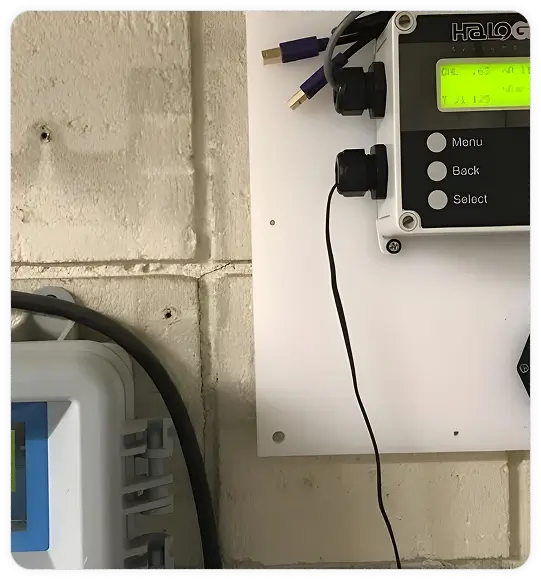
Technical Specifications and Features of the MP5 Sensor
Flow Independent
Operates effectively regardless of flow rate changes.
Self-Cleaning
Minimizes maintenance by automatically cleaning itself.
Multi-parameter
Measures up to five parameters, enhancing monitoring capabilities.
Results and Impact
Water Conservation
Significantly reduced non-revenue water previously used for waste stream disposal.
Operational Efficiency
Real-time monitoring allowed for immediate response to chlorine dosing issues, enhancing water quality control.
Cost Savings
Reduced maintenance and calibration needs led to financial savings and increased system reliability.
Maintenance
The Wet Tap version of the MP5 sensor operated for two years without any maintenance or calibration.
Soon after installation, the sensor quickly alerted operators to a drop in chlorine residual, allowing swift action to maintain water quality. Without Halogen’s wet tap sensor, the well may have continued to deliver water with very little chlorine residual. The City realized the importance of continuous monitoring at each well location.
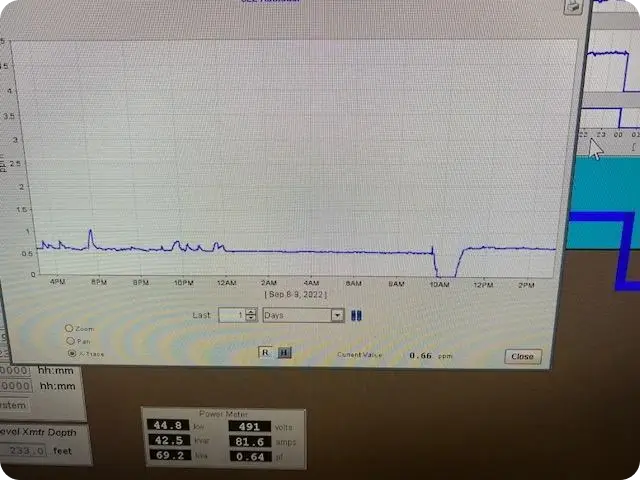
Conclusion
The adoption of Halogen Systems’ MP5 chlorine sensor by the City of Lakewood has proven to be a successful strategy for both environmental conservation and operational enhancement. The sensor’s design without a waste stream and its ability to provide accurate, real-time data has set a new standard for chlorine monitoring in municipal water systems. This case study underscores the importance of investing in innovative technologies to meet the dual challenges of resource management and infrastructure resilience.
Future Directions
The success of the MP5 sensor encourages further integration into the city’s monitoring systems, potentially at all well locations to ensure comprehensive chlorine residual oversight, thus safeguarding public health and water quality standards.



- 10 December 2024
Technical White Paper: Monitoring Chlorine in a Distribution System
Abstract
Abstract This document describes the implementation and benefits of the Halogen Systems MP5 chlorine sensor in the City of Lakewood’s water distribution network. The paper outlines the challenges faced with traditional chlorine monitoring methods, the transition to a waste stream-free chlorine sensor, and the outcomes of this technological shift in terms of water conservation and operational efficiency.
Introduction
The City of Lakewood, utilizing groundwater from the Central Basin Groundwater Basin, operates an extensive water infrastructure including 11 deep wells, 180 miles of water mains, three storage facilities, and two treatment facilities. This infrastructure supports an annual water delivery of approximately 6,500 acre-feet. The need for an innovative chlorine monitoring solution arose due to the inefficiencies and waste associated with traditional chlorine sensors.
Technical White Paper: Monitoring Chlorine in a Distribution System
Waste Stream
Traditional amperometric and DPD chlorine sensors generate significant wastewater, up to 69,000 gallons annually.
Non-Real-Time Monitoring
Daily grab samples did not allow for immediate detection of chlorine dosing issues such as air locking, pump failure, or leaks.
The Search for Innovative Solutions
In response to these challenges and driven by the necessity for water conservation amid California’s drought, Derwin Dy, then Assistant Director of Water Resources, initiated a search for an NSF-61 approved chlorine analyzer without a waste stream. The collaboration with Halogen Systems led to the development of the MP5 sensor.
Implementation of Halogen MP5 Sensor
Flow Cell Installation
Deployment
Initiated in April 2021 at a booster station, alongside the Hach CL17 for comparison.
Performance
The MP5 sensor showed accuracy within 0.04 ppm of the Hach CL17, required minimal maintenance, and no calibration over six months, contrasting with membrane-style sensors needing weekly calibration.
Benefits
Eliminated the need for a waste stream, reducing water usage and operational costs.
Wet Tap Version
Certification and Deployment
After achieving NSF61 and NSF372 certifications, the wet tap version was tested at a well site.

Challenges and Solutions
Initial issues with water pressure were addressed through design modifications by Michael Santillan.
Outcome
Provided real-time alerts on chlorine levels, ensuring water quality maintenance without the need for new monitoring infrastructure.

Technical Specifications and Features of the MP5 Sensor
Flow Independent
Operates effectively regardless of flow rate changes.
Self-Cleaning
Minimizes maintenance by automatically cleaning itself.
Multi-parameter
Measures up to five parameters, enhancing monitoring capabilities.
Results and Impact
Water Conservation
Significantly reduced non-revenue water previously used for waste stream disposal.
Operational Efficiency
Real-time monitoring allowed for immediate response to chlorine dosing issues, enhancing water quality control.
Cost Savings
Reduced maintenance and calibration needs led to financial savings and increased system reliability.
Maintenance
The Wet Tap version of the MP5 sensor operated for two years without any maintenance or calibration.
Soon after installation, the sensor quickly alerted operators to a drop in chlorine residual, allowing swift action to maintain water quality. Without Halogen’s wet tap sensor, the well may have continued to deliver water with very little chlorine residual. The City realized the importance of continuous monitoring at each well location.

Conclusion
The adoption of Halogen Systems’ MP5 chlorine sensor by the City of Lakewood has proven to be a successful strategy for both environmental conservation and operational enhancement. The sensor’s design without a waste stream and its ability to provide accurate, real-time data has set a new standard for chlorine monitoring in municipal water systems. This case study underscores the importance of investing in innovative technologies to meet the dual challenges of resource management and infrastructure resilience.
Future Directions
The success of the MP5 sensor encourages further integration into the city’s monitoring systems, potentially at all well locations to ensure comprehensive chlorine residual oversight, thus safeguarding public health and water quality standards.